Multimedia Collection
I.Publications by Tsinghua University
1 Miscellaneous Notes on European Travel
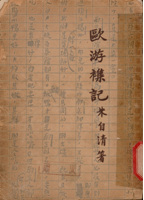
|
Written by Zhu Ziqing; Shanghai Kaiming Bookstore, 1934 (1st edition)
On October 24, 1934, Zhu Ziqing, the head of the Chinese department of Tsinghua University, wrote the following neatly on the blank page of the book: please keep in the Library of Tsinghua University the book donated by Zhu Ziqing On October 24, 1934. He has been well applauded as an extraordinary prose writer with an outstanding performance during the New Literature Movement. He boasted superb skills and meticulous mind showed in his proses, representing the robust artistic vitality of the new literature. Call number: Ji 798.4 8707 |
2 The Collected Works of Wen Yiduo
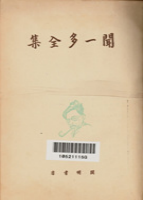
|
Edited by Zhu Ziqing, Guo Moruo, Wu Han, and Ye Shengtao; Shanghai Kaiming Bookstore, Aug 1948 (1st edition) In August 1947, Zhu wrote in the preface of the book: Wen Yiduo has been recognized as a real warrior for the sacrifice of his life for the democratic movement. He has been also known as a poet and scholar. Any of the varied statuses can be seen based on specific circumstances. Wen evaluated himself in one of his letters to Zang Kejia, a well-known Chinese poet and the chief editor of Poetry magazine: I feel like a volcano that fails to erupt, which has burned me terribly. Unfortunately, I haven’t been capable to break through the restraint of the crust to release light and heat. Such feeling can only be noticed by a few long-time friends, such as Chen Mengjia, a Chinese scholar, poet, paleographer, and archaeologist, who can feel my passion when I was in silence. Call number: Jia 818 8623 |
3 Consanguinity Study on Chinese Talents

|
Written by Pan Guangdan, a Chinese sociologist, eugenicist, and writer; the Commercial Press, 1941 (1st edition) This book has been recognized as one of the research series of Sun Yet-Sen Institute for the Advancement of Culture and Education. Its writer said in the preface of the book: It can be considered as my first attempt to observe the issue of Chinese talents from the perspective of a biogenetics in a systematic way. After the publication of the first edition, he wrote on the book: the writer donates the book to the Library of Tsinghua University. Call number: Bing 630.7 8050 |
4 Eight years of the National Southwest Associated University
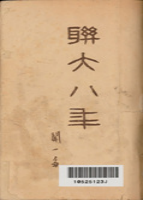
|
Written by the chief-editor ofNew Year's Eve Supplement of National Southwest Associated University; the Student Press of National Southwest Associated University, July 1946 (1st edition) This book boasts simple expression and substantial content. It comprises Historical Review, Life in the University, and Professors in the University in the University. The Historical Review introduces a series of major events in the history of the university, such as the Anti-Kong Xiangxi movement, the May Fourth commemorative activities, poster exhibitions to popularize progressive books, cultural activities to introduce major works of literature during the May 4th movement, and the New Culture Movement, the December 1st Movement, democratic movements and others. The chapter of Life in the University refers to daily records involving the introduction about the life in university and experience on teaching assistants, part-time jobs, military training, translation training, associations, and others. As for Professors in the University, the first three articles tell Wen’s stories and another article titled the Introduction of the Professors elaborated the students’ impression of their professors, which is quite distinctive. Call number: Wu 868.31 9208 |
5 Bright Day
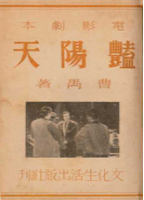
|
Written by Cao Yu; Cultural and Life Publishing House, May 1948 (1st edition) The Chinese who had lived miserable lives during the eight years of the War of Resistance Against Japan had longed for the victory. However, they ended up with more disappointment after the declaration of the long-awaited end of war. This is what Cao attempted to express for the script of the movie. As the director, he had filmed the movie for almost four months. When talking about its theme, he said: There is a couplet in China, which means everyone sweeps the snow in front of his house without any concern about the frost on other’s roofs and the banner is to mind your own business. As far as he is concerned, what the couplet tries to express is inappropriate. What we should do is to distinguish right from wrong and to commit to the right without any fear of troubles and injustice. It was already the spring of 1948 when the film was released. Call number: Geng 680 8418 |
II. Lu Xun’s works
6 Nahan or Call to Arms
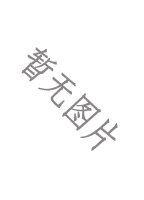
|
Written by Lu Xun and edited by Zhou Zuoren; Beijing Xinchao Publishing House, August 1923(1st edition) Nahan has been recognized as Lu Xun's first collection of novels and also the most influential one among his collections. It incorporates over a dozen of his novelettes created from 1918 to 1922 and its first edition was published by Beijing Xinchao Publishing House in 1923. Lu Xun had worked to arouse the people and popularize the New Culture Movement, which was shown in his preface to the work: I considered myself not a person who was eager to deliver any comment on what I saw anymore. However, I still can’t leave the previous pathetic loner of myself behind. In this case, sometimes I can’t help expressing myself to cheer up those warriors who have kept committed to China’s revolution alone and push the fear from their minds. Call number: Geng 881 8791 |
7 Panghuang or Wandering
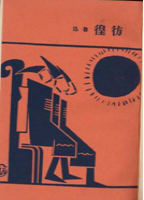
|
Written by Lu Xun; Beixin Shuju, 1926 (1st edition) The collection captures 11 novels written from 1924 to 1925, including Zhufu or The New Year's Sacrifice, Zaijiuloushang or In the Tavern, A Happy Family, The Misanthrope, Regret for the Past, 18.The Divorce and others. It was published by Beixin Shuju in 1926. On the flyleaf of the book, there is his inscription: I would go up and down to seek my heart's desire. Lu shared the feeling with the book name when writing it. It was a frustrating period after 1923 when the May Fourth Movement suffered a downgrade, which forced the revolution center to be relocated towards the south and triggered the division within the group of members participating in the New Cultural Movement. Under such backdrop, Lu wrote a short poem named Title "Wandering" to interpret his mood of the moment: The echo to the new lecture was little while a massive number of literati were still showing off their works in an obsolete way. I was left alone with the new lecture in my mind to imagine the national future. Call number: Geng 881 8797 |
8 A Selection of Lu Xun's Letters
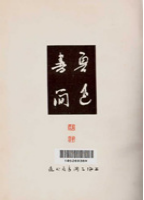
|
Written by Lu Xun; Shanghai Sanxian shuwu, June 1937 (1st edition) The book incorporates over six dozens of letters between Lu Xun and his friends which had been collected by Xu Guangping, one of Lu Xun’s students, and was published by Cultural and Life Publishing House under the name of Sanxian shuwu. It has been well recognized as a significant document containing Lu Xun’s handwriting. Call number: Geng 358 8812.11 |
9 Huagai Collection
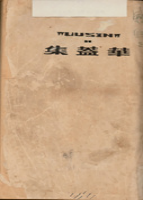
|
Written by Lu Xun; published by Luxun Quanji Publishing House, December 1941(1st edition) The Collection captures 31 essays It was written by Lu Xun in Beijing in 1925. Lu referred to these essays as the desolation and roughness in his soul and the scars from the sand blown in daily life which was packed with constant relocation in the Inscriptions. The book was collected by the December 1st Movement-themed library of Tsinghua University. Call number: Geng 328 8797.2 |
10 Eryi Collection
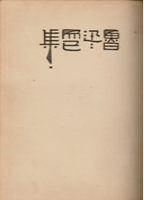
|
Written by Lu Xun; Luxun Quanji Publishing House, October 1947 (1st edition) The collection contains essays It was written by Lu Xun in Guangzhou and Shanghai in 1927. Lu delivered the purpose of the book in the inscription: Random thoughts that are recorded in the collection have crossed my mind after the witness of tons of blood and tears shed all these years. However, as the blood and tear dried, the paid price has only been in exchange for the fact that these butchers have stayed out of law with steel knives and great power in their hands. Facing the fact, my thoughts have just ended up with nothing but themselves. Now, they come into the book where they deserved to go. I just stay where I am. Call number: Jia 818 8810.1 |
III.Guo Moruo’s Works
11 Research on Qu Yuan

|
Written by Guo Moruo, a Chinese scholar; Chongqing Qunyi Publishing House, July 1943 (1st edition) After the Southern Anhui Incident in 1941, Guo Moruo wrote historical plays such as Qu Yuan, Cherry Blossom, Tiger-Shaped Tally, and Peacock Gallbladder. As for Qu Yuan, a Chinese poet and politician who lived during the Warring States period, Guo wrote in the Postscript of Research on Qu Yuan: My entire view of Qu Yuan is probably recorded in this book." The Research contains: Qu Yuan's biography, works, his career, thoughts, and the translation of Li Sao or The Lament or On Encountering Trouble, a poem of search, sorrow, and disillusionment of an exiled minister of state. Call number: Geng 420 8082 |
12 Ten Years of Creation
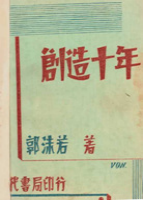
|
Written by Guo Moruo, a Chinese scholar; Shanghai Modern Bookstore, September 1932 (1st edition) In 1932, Guo created Ten Years of Creation in Japan, the most popular book in his autobiography named The Autobiography of Moruo. The book boasts substantial historical value and has been quite cherished. Guo also praised the works in his words: I believe later generations of artists and historians have been sure to draw materials from this book. He also said: Strange to say, it is Lu Xun, a great novelist in China, who has inspired me to decide to write this book. Call number: Geng 204 8082 |
13 Ten Criticisms

|
Written by Guo Moruo, a Chinese scholar; Shanghai Qunyi Publishing House, September 1945 (1st edition) The book concerning the history of pre-qin thoughts was written from 1943 to 1945 and has been well known for incorporated 10 articles of criticism to pre-qin thoughts and self-reflection and its first edition was published by Chongqing Qunyi Publishing House in September 1945. In detail, the 10 articles refer to Self Criticism of Ancient Studies, Criticism of Confucianism, Criticism of the Eight Schools of Confucianism, Criticism of Jixia Huanglao School, Criticism of Zhuangzi, Criticism of Xunzi , The Criticism of Mingbian Thought, The Criticism of Early Legalists, The Criticism of Han Feizi, and The Criticism of Lu Buwei and Qin Wangzheng. Call number: Geng 328 8082.03 |
14 The Collection of Moruo’s Letters
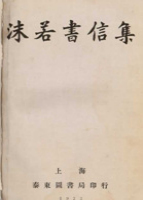
|
Written by Guo Moruo, a Chinese scholar; Shanghai Taidong Book Bureau, 1933 (1st edition) In August 1933, Guo evaluated the collection in the preface in his words as follows: The motivation for the collection is quite clear to me, which mainly refers to the original purpose of publication before the letters. That’s why I wrote them in a very humble way. However, my recorded previous life was introduced quite frankly. To specific, the collection contained his correspondence with Zong Baihua, Tian Han, Yu Dafu, Cheng Fangwu, and other well-known writers. Call number: Geng 358 8082 |
IV.Political Works
15.The Eight-Year War of Resistance
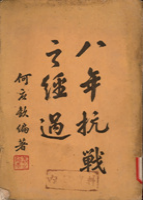
|
Written by He Yingqin The book was printed by the Army General Command in May 1946, captures 9 pages of photos and photocopies of the Japanese Instrument of Surrender, 226 pages of the content, and 21 diversified statistical tables. In detail, it captures the overall situation of the War of Resistance across the country, military intelligence, and internal statistics that anyone else may be unavailable to access from an overall perspective due to He’s assumption of the Chief of Staff of the Military Commission and Commander-in-Chief of the Chinese Army during the War of Resistance Against Japan. Although he was occupied with tons of military affairs, he had still been engaged in putting the files of the war history in order by year. The collated materials have covered the process of the eight-year resistance, which boasts a crucial role in research on the War of Resistance. The book with substantially detailed description has been quite rare in China. The preserved collection was attached with an official letter issued by He Yingqin to the library in 1948 and sealed by the Ministry of “National Defense” in Taiwan. 索书号:己285 8729 Call number: Ji 285 8729 |
16 Remnants of Life in Distress
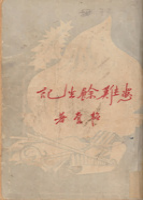
|
Written Zou TaoFen; Taofen Publishing House, May 1946 (1st edition) Zou Taofen with the original name Zou Enrun was born in 1895 and became editor of the society's journal, Shenghuo zhou kan (Life Weekly) in 1926. After the September 18 Incident, Zou Tao has taken a firm stand against the non-resistance policy of the Kuomintang government. In this regard, he had taken the opportunity of assuming the chief edition of the Life Weekly to oppose civil war and to unify all possible forces against the invasion. Such a fundamental goal had empowered the journal to become a banner for domestic medium to resist Japan and save the country. In July 1932, he established the Life Bookstore and served as the general manager. Later, Zou had pooled together a large batch of progressive writers in just a few years, expanded his branches up to 56 across the country. He has successively published dozens of progressive publications and over 1000 books including the translations of Marxism. When it came to January 1933, Zou joined the China League for Civil Rights initiated by Soong Ching Ling, Cai Yuanpei, Lu Xun et.al, and was elected as an executive committee member. However, he was soon forced to go into exile overseas. This book has emerged as his last legacy. Call number: Ji 578 8805.1 |
17 Zou’s Exile Life

|
Written by Yang Ming; Shanghai Democracy Press, July 1946 (the lithograph edition) The book has been recognized as a second-hand book in the liberated area and classified into revolutionary literature. Its circulation was only 2,000 copies. In addition to the introduction of Zou’s exile life, the book attached his final work and Guo Moruo's speech at Zou’s memorial service in Chongqing. The book was collected by the December 1st Movement-themed library of Tsinghua University. Call number: Ji 578 8381 |
18 Two-years Experience as a Political Prisoner
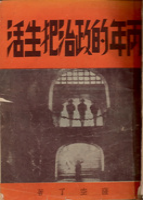
|
Written by Sa Konglliao;Chunfeng Publishing House, November 1947 (1st edition) Sa Kongliao (1907-1988) was a Chinese journalist, a newspaper editor-in-chief, and a journalist of Mongolian nationality. He was an expert in art theory with Pseudonyms including Liaoliao and Ai Qiubiao. In May 1943 Sa was arrested by Kuomintang agents and detained in concentration camps in Guilin and Chongqing, and then got rescued in June 1945. The book elaborates on the life of the concentration camp and the author delivered his wish as follows: I hope every reader can come to realize Chinese tremendous suffering in consequence of no peace in our mother country during that period. We cannot allow such chaos and turbulence to continue to ruin our lives. Call number: Ji 585.8 8544 |
|
|
五、Literature
19 Shima's Diary
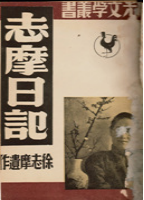
|
Written by Xu Zhimo, an early 20th-century romantic Chinese poet, and edited by Lu Xiaoman, a celebrated painter, writer, singer, and actor in China; Shanghai Chenguang Publishing Company, March 1947 (1st edition) Lu Xiaoman wrote the following in the preface: From now on, I can finally say goodbye to my disease, being free from the chain that has constrained me for over 2 decades. Leaving the imprisoned life behind, I’m no longer stuck with a decoction vessel, sparing time to make a difference. To be specific, I intend to collate and publish what Xu had written, and then write a biography of the two of us. As long as fulfilling the bucket list, I can get relieved without any attachment. Call number: Ji 583.8 8930 |
20 You Ren Poems Cun

|
Written by Yu Youren; Shanghai World Book Company, May 1930 (1st edition) Yu Youren (1879-1964), with Han nationality, was born in Jingyang, a county of Xianyang city of Shaanxi Province, and raised in Sanyuan, Shaanxi. He had been recognized as a reputed politician, educator, and calligrapher in modern and contemporary China. He had an early name Bo Xun with the courtesy name of Youren, which is different from the well-known surname in Chinese characters but share the same pronunciation with the latter. He has been also known as Sao Xin and Ran Weng and named himself as Taiping Senior Man in his later years. As a member of the Chinese Revolutionary Alliance in his early years, he had served as a senior official in the Nationalist government for many years. After the founding of New China, he has been applauded as a modern Chinese calligrapher, the founder of modern well-known Chinese universities such as Fudan University, Shanghai University, and the National Northwest Agricultural and Forestry College (or current Northwest A&F University). Call number: Geng 458 8236.1 |
21 An Exercise in Weiyanju
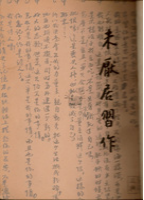
|
Written by Ye Shaojun; Shanghai Kaiming Bookstore, December 1935 (1st edition) The book refers to Ye Shengtao's collection of essays published in 1935 and captures 36 essays from 1923 to 1935. Ye described the book as the following: the book was named as an excise because these incorporated essays had been created out of the thoughts of the free expression of my experiences and ideas and the arising benefits to my daily life. Call number: Geng 328 8516.1 |
22 Preparation for creation
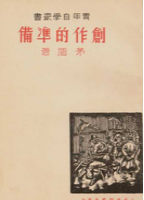
|
Written by Mao Dun; Shanghai Shenghuo Bookstore, November 1936 (1st edition)
In this book, Mao Dun elaborated on the process of creativity, which refers to learning, imitation, basic exercises, and the collection of materials from the perspective ranging from characters to backdrop and self-examination systematically. All he tried to tell the youth is that there is no shortcut or recipe to excellent creativity. Call number: Geng 307 8498 |
23 Ziping's Autobiography: From Huanglong to WuSe
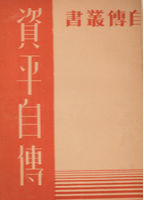
|
Written by Zhang Ziping; Shanghai Shidai Printing Factory, September 1934 (1st edition) Zhang Ziping (1893-1959), a native of Meixian, Guangdong, had been extremely popular in the early 1930s as a controversial writer with a complicated history. He had collaborated with Guo Moruo, Yu Dafu, Cheng Fangwu et al to plan and establish the Creation Society, the most crucial literary society in the history of modern literature. There is an author’s picture in front of the book. Call number: Ji 578 8862.1 |
24 The Ugly Duckling
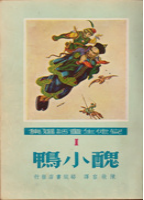
|
Written by Hans Christian Andersen and translated by Chen Jingrong; Shanghai Luotuo Bookstore, April 1948 (1st edition) Speaking of the original intention to translate Andersen’s fairy tales, the translator said: Living in a hard time, adults have been struggling to survive, suffering mental and physical abuses. However, we have borne a goal and a belief in our minds because we have been fully aware of the arduous duty towards society on our shoulders. But what about those innocent and lovely children? How can we bear to let them expose to the dark side of life alone? Can’t we give them some spiritual pleasures and a beautiful fantasy when they have been experiencing miserable lives after born with purity and innocence? Call number: Geng 794 A544.1 |
25 Crab

|
Written by Mei Niang; Beijing Wude News Agency, November 1944 (1st edition) Mei Niang born in 1920 has been recognized as a modern female writer from Changchun City, Jilin Province. With the original name of Sun Jiarui, she lost her mother in the early years, which echoed with the pronunciation of her current name that means losing a mother. When she turned 17, the first edition of a study collection named Xiaojie Collection was published. At the age of 20, another collection titled Dierdai or the Second Generation was released, which represented the transition from a mere description of youth romance to the portrait of the masses at that time. In 1942, Mei started to work in the Funv Zazhi or Women's Magazine in Peking. When it came to 1942, both Mei and Zhang Ailing were appraised as the Most Favorite Female Writer in the selection launched by the Madezeng Bookstore in Peking and Yuzhoufeng Bookstore in Shanghai. Since the two of them have often been referred to as Nan Ling and Bei Mei or Zhang in the south and Mei in the north. Call number: Geng 881 8376.2 |
26 August in the countryside
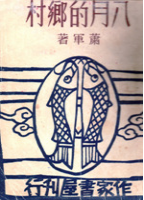
|
It was written by Xiao Jun. The book was written in October 1934 and had gone viral. Its new edition was published by Zuojia Shuwu in December 1946. The reputed book was written in October 1934. In 1935, its first edition was published by the Shanghai Nulishe as one of the slavery-themed series and was distributed by Rongguang Book Company. The novel’s preface was written by Lu Xun. Lu commented on the works in the preface as follows: I think the August is quite impressive among the novels about the occupation of the three provinces in the East I have read. Since then, Xiao Jun and Xiao Hong, a Chinese fiction writer, have been reputed as the representatives of the group of Northeast writers. Upon publication, a batch of copies was sent to Lu. After that, Lu Xun successively asked for several batches to send them to his friends, or entrust Hu Feng, Chinese literary theorist, and critic, to sell them on his behalf. Besides, he also commissioned someone to send them to the Soviet Union, Japan, India, the United States, Britain, Germany, and other countries, as well as the anti-Japanese base areas led by the Communist Party of China. Meanwhile, they had been sold quickly among universities in Shanghai in secret, and become quite popular among the progressive masses, which had aroused great repercussions in the society. From the publication in Shanghai in 1935 to its reprint by Lu Xun Cultural Publishing House in Harbin in 1947, the novel had been published by various bookstores in many forms. Call number: Geng 882 8538 |
27 Piaoling
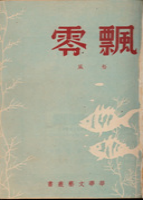
|
Written by Zheng Shifeng; Shanghai Huahua Bookstore, October 1948 (the Shanghai edition) Piaoling is a novella about women's spontaneous awakening. Zheng Shifeng (1920-1996), formerly known as Zheng Shixue with the pseudonyms of Pu Ou, Linghuwei, etc., was born in Zizhong County, Sichuan Province. He published his work under the name Shi Feng on Xiandai Wenyi for the first time in 1941. During the War of Liberation, he had created many essays, such as Om Om Collection, Bee Sting, and Bai Fa Bu Zhong Ji. Call number: Geng 882 8318 |
28 He died the second time
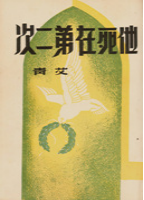
|
Written by Ai Qing; published by Shanghai Magazine Company, May 1946 (1st edition) This book has been known as a collection of Ai Qing's poems. It captures 8 modern poems such as The Trumpeter, Start, and Dream. The works refer to a long narrative poem written after the outbreak of the Anti-Japanese War in 1937. It tells the story of an ordinary soldier who got injured in a war against Japanese invaders and died on the field of another battle. The poem deeply dissected the soldier's psychological activities and emotional changes, elaborating on his perception of war and the meaning of life. Once being published, it has attracted great attention and praise. Call number: Geng 458 8486.3 |
29 She Wants To Kill
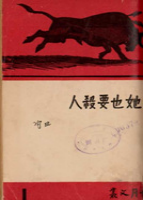
|
Edited by Hu Feng; Haiyan Bookstore, February 1947 (1st edition) The book refers to one of Tian Jian's narrative long poems written in May 1938 and later renamed as Her Song. The poem was declaimed by Wen Yiduo in the following way: The poet was reciting the poem with his thick and long hair trembling like a lion’s hair. His tone grew more resonant out of anger when delivering grand righteousness and irresistible truth, which triggered a surge of emotion and an overwhelming impulse to clench fists and take action for the popularized theme. The book was incorporated into the first section of Qi Yue Wen Cong edited by Hu Feng. Its cover was designed by Hu using a pair of Soviet woodcuts-themed a wounded bullfight to shock the readers' souls. Call number: Geng 458 8605.2 |
30 Yuxi Poetry Mystery
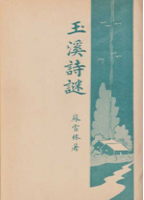
|
Written by Su Xuelin; the Commercial Press, December 1947 (1st edition) It was published by Shanghai Beixin Publishing House in 1928 with the original name A Study of Li Yishan's Love Story. At the end of the War of Resistance Against Japan, the book was re-published by the Commercial Press with the title changed into the current. Su Xuelin (1897-1999), a well-reputed modern female writer and literary researcher, had the early name Gong Xiaomei with the courtesy name of Xuelin and others. She was born in Taiping County, Anhui Province. When writing the book, she held that Li Shangyin's poems were obscure because the girls he fell for were female Taoist priests, wives, and prostitutes, who were quite different from ordinary women. She hoped that the poem could inspire readers to analyze Li’s poems, triggering them to seek new evidence and create innovative insights. By doing so, these poems reputed for their obscurity for thousands of years could be interpreted in a clear and specific way. Call number: Geng 402 8548 |
31 The Tragedy of Lin Daiyu

|
Written by A Yin or Li Pinzhen;published by Hong Kong Qiandai Publishing House, February 1948 (1st edition) The book captures 7 special essays on characters in novels: The Tragedy of Lin Daiyu, Jia Baoyu and the Ideal Human Nature, Jia Baoyu and Jia Zheng, On Xue Baochai, Jia Baoyu and Don Quixote, You Eerjie of Xiaojiabiyu, and Purple Cuckoo and Flower Attacking People. A Yin refers to Li Pinzhen’s pseudonym. Call number: Geng 874 8927 |
32 Fengwangchuan

|
Written by Guan Yongji; North China Writers Association, May 1945 (1st edition) In 1945, it was released by the North China Writers Association as one of the North China Literature and Art series. The novel tells the miserable lives of peasants who went bankrupt and left their hometowns. Through the portrait of these small potatoes living mechanically or falling from virtue, Guan Yongji attempted to reflect the misery, confusion, and dissatisfaction of the people in the enemy-occupied areas. Guan Yongji (1916-2008) formerly known as Zhang Shouqian, was born in Jinghai, Hebei. During the Occupied Period, he had published collections of novels Chuqiu and Fengwangchuan, and a novel titled Niu. Guan also released many novels, such as Quan, Riverside, Clown, The Mayor, and the Mayor's Son. He collected his essays into collections, including Shike Collection, Huaihu Collection, The Essay of Xun Meng An. Call number: Geng 881 8627 |
33 Zijiu or Self-Salvation
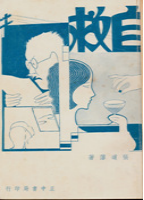
|
Written by Zhang Daofan; Nanjing Zhengzhong Bookstore, July 1935 (1st edition) Zhang Daofan created Self-Salvation and Self-Entertainment in the 1930s. He also wrote drama scripts, such as The Last Hour and Slaying the Enemy to Serve the Country, which has contributed a lot to the history of Chinese drama, the introduction, and localization of western dramas. Self-Salvation refers to Zhang’s four-act comedy. The book contains more than 40 black and white illustrations (group photos and stills) contained in over 20 pages. Call number: Geng 670 8862 |
34 Leave the Ivory Tower
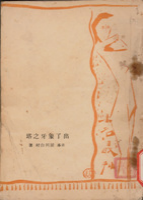
|
Written by Kuriyagawa Hakuson and translated by Lu Xun; the Beijing Weiming Society, December 1925 (1st edition) This book refers to a collection of literary criticisms by Kuriyagawa Hakuson, a Japanese scholar, which was translated into Chinese by Lu Xun at the turn of 1924-1925. During the translation, most of the completed essays were published in the Beijing News Supplement and People's Literature Weekly. The collection was published by the Beijing Weiming Society in December 1925. The book preserved in the library refers to the first edition of a separate book, which boasts great value. Call number: Geng 040, Ri 401 |
35 Lu Xun on Fine Arts
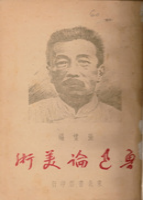
|
Edited by Zhang Wang, Kiamusze Northeast Bookstore, October 1948 (1st edition) The book cover refers to a photo of conservation between Lu Xun and a woodcut young worker during his visit to the National Woodcut Society in Shanghai on October 9, 1935, which was 10 days before Lu’s death. Call number: Xin 040 8810 |
36 On the Revolution of Chinese Literature
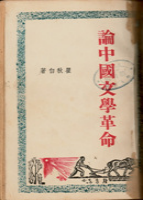
|
Written by Qu Qiubai; Hong Kong Ocean Bookstore, July 1947 (1st edition) The book was compiled by Feng Naichao who appraised Qu Qiubai as the first person to use Marxist-Leninist methods to deal with the issues of Chinese literature. Qu Qiubai, 1899-1935, formerly known as Qu Shuang, was born in Changzhou, Jiangsu. He joined the Communist Party of China in 1922 and was killed in Changting, Fujian province in June 1935. He wrote Superfluous Words and other poems before his death. He published many collections of essays include Journey to the Land of Hunger, Impressions of the Red Capital, and a book named On the Revolution of Chinese Literature. His posthumous works are the Collected Works of Qu Qiubai. Call number: Geng 204 8601 |





